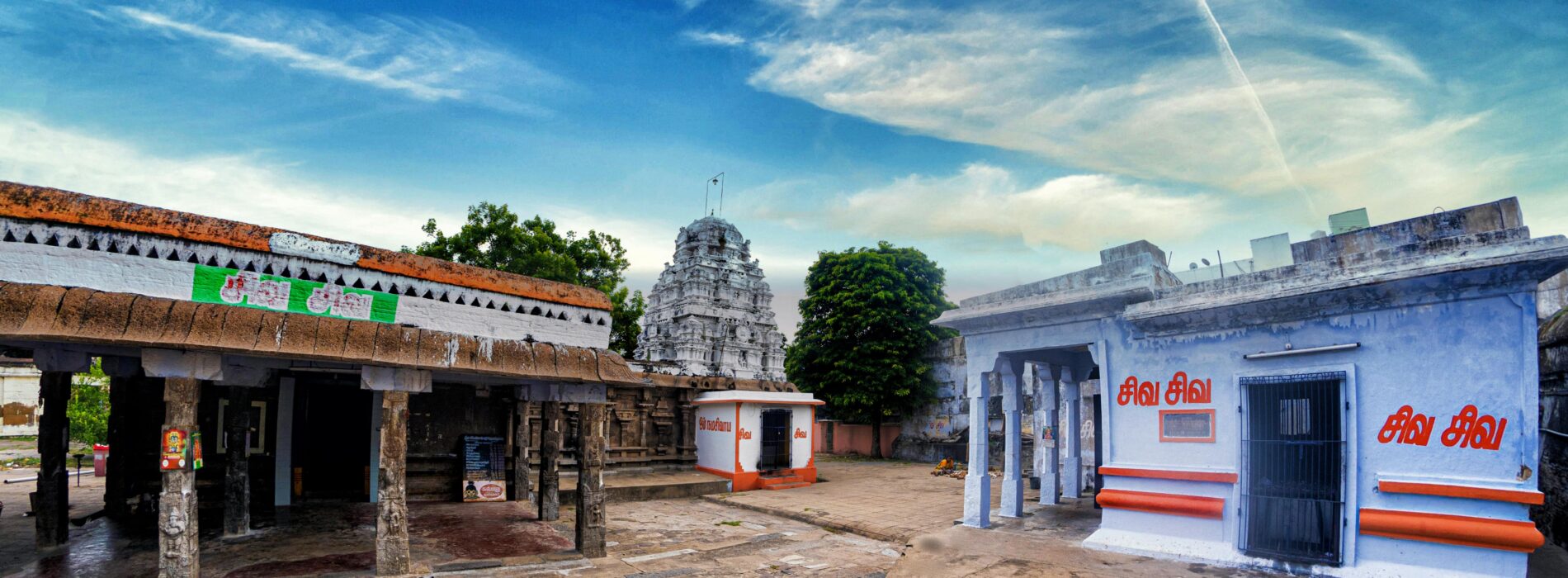Manikantishvara Temple
The Lord The Selfless Protector of the World
Embark on a spiritual journey to the revered Manikantishvara Temple in Kanchipuram, where legends of Lord Shiva’s divine leelas and selfless acts unfold. Among the many temples in this sacred city, the Manikantishvara Temple holds a significant place, with tales of celestial serpents, churning the milky ocean, and the remarkable ‘halahala pana’ episode. Join us as we delve into the captivating narratives and explore the architectural marvels and divine entities residing within this ancient shrine.
The ‘Halahala Pana’ – Lord Shiva’s Selfless Act
Legend has it that during the cosmic endeavor to churn the milky ocean to obtain the elixir of life, a deadly poison known as halahala emerged instead. The magnitude and destructive potential of the poison threatened the existence of the entire world. In their distress, the celestial beings and demons fervently invoked Lord Shiva for salvation. Responding to their prayers, Lord Shiva fearlessly consumed the poison to protect the world. To prevent the poison from spreading, Goddess Parvati held his throat, turning it blue and giving him the name Nilakantha or Manikantha.
The Installation and Worship
Impressed by Lord Shiva’s selflessness, the celestial deities, accompanied by Brahma, Vishnu, and the serpent Vasuki, descended to Earth. They established a sacred Shiva Linga at this site, the Manikantishvara Temple, to worship and honor Lord Shiva. The temple’s main deity faces west, representing Sadyojata murti, with the entrance located on the southern side.
Architectural Marvels and Divine Entities
The Manikantishvara Temple showcases a fascinating blend of architectural styles, reflecting its origins in the Pallava era and subsequent renovations by the Cholas. The garbhagrha, antarala, ardha-mandapa, and maha-mandapa form the temple’s structure. The two-tier Vesara vimana within the garbhagrha is notable for its direct transition from prastara without a separate Bhumi Desha.
As devotees traverse the temple, they encounter various divine entities adorning the surroundings. Stucco images of Shiva and Parvati as Rishabharudha welcome visitors at the entrance of the maha-mandapa. The ardha-mandapa features unique depictions of Chandra and Surya, symbolizing the moon and sun. Additionally, the Koshtas surrounding the Garbhagrha showcase intricately carved images of Durga, Brahma, Mahavishnu, Dakshinamurti, and Ganesha.
A Tapestry of Devotion and Worship
Within the prakara or circumambulatory passage, devotees can revel in the divine presence of various deities. Witness the magnificence of Ganesha, Sri Valli Devasena Subramanya, Ganesha with Nagabandha, Markandeya, Bhairava, Padavettamman, Sundrambal, Phanamanishvara, and Kanikandishvara. Each entity represents unique aspects of the divine cosmic forces and offers devotees an opportunity for spiritual connection and enlightenment.
Conclusion
The Manikantishvara Temple stands as a testament to the timeless devotion and divine grace bestowed upon humanity. Through the awe-inspiring tale of Lord Shiva’s ‘halahala pana’ and the captivating presence of various deities, this sacred shrine embodies selflessness, protection, and spiritual awakening. As you explore the temple’s architectural wonders and immerse yourself in the divine ambiance, may you find solace, enlightenment, and a deep connection with the eternal divine forces that govern our universe.




